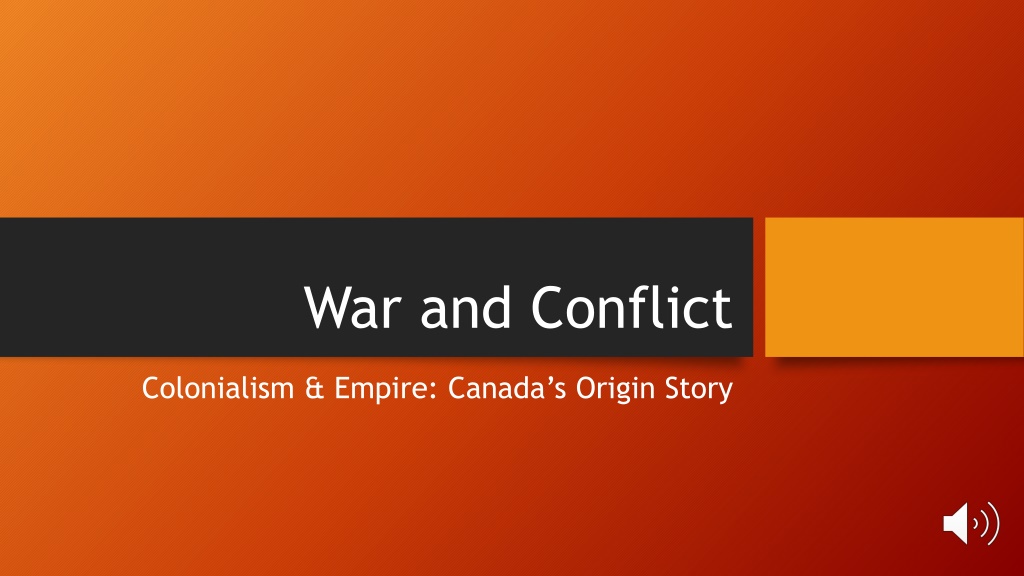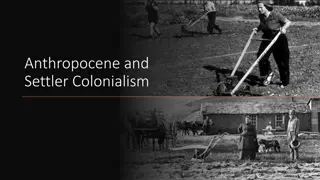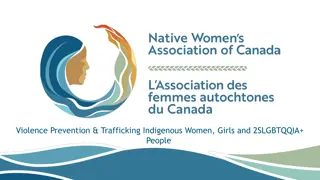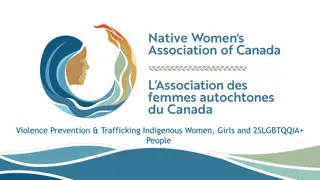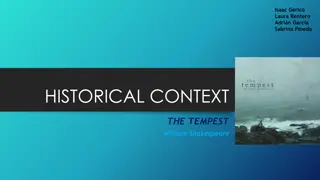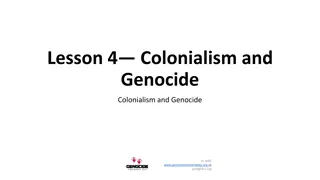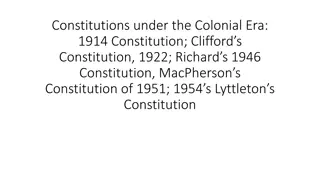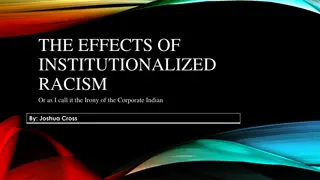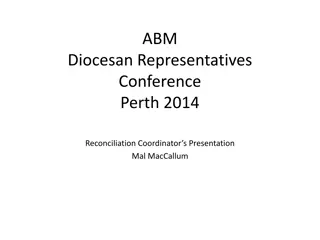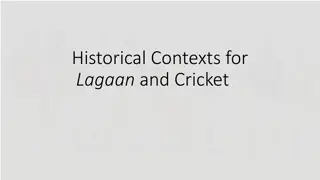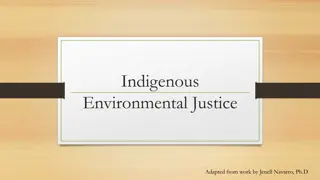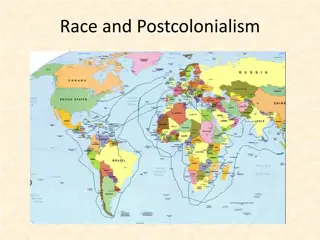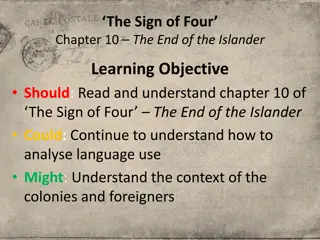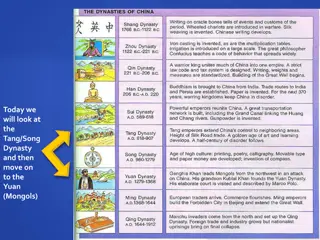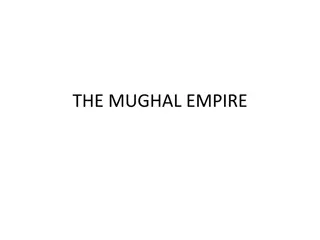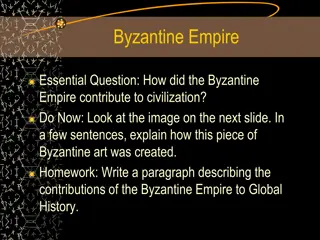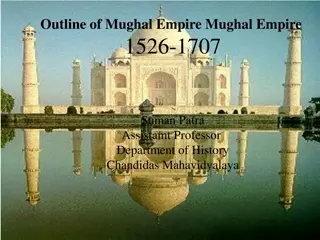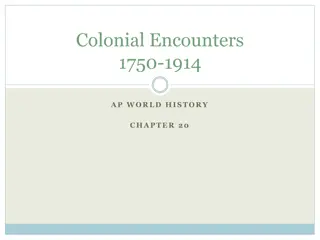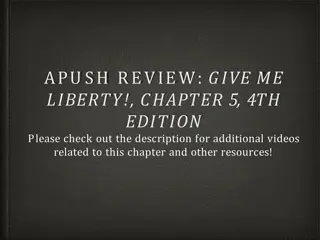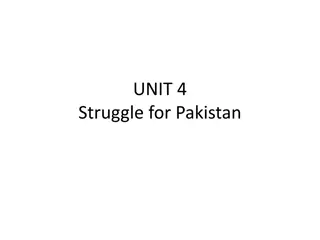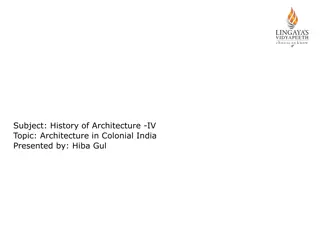Unveiling Canada's Colonial Past: An Indigenist Lens on Settler-Colonialism and Empire
Delve into Canada's origin story through an Indigenist lens, exploring themes of colonialism, empire, and resistance. Uncover the myth-building supporting settler-colonization and the erasure of Indigenous peoples. Reflect on the controversial doctrine of discovery and the impact of the Indian Act in the bureaucratization of genocide. Examine how Canada's history is interconnected with the suppression of Indigenous rights and presence.
Download Presentation

Please find below an Image/Link to download the presentation.
The content on the website is provided AS IS for your information and personal use only. It may not be sold, licensed, or shared on other websites without obtaining consent from the author. Download presentation by click this link. If you encounter any issues during the download, it is possible that the publisher has removed the file from their server.
E N D
Presentation Transcript
War and Conflict Colonialism & Empire: Canada s Origin Story
Colonialism and Empire: Canadas origin story Research with an Indigenist lens Canada s origin story The Indian Act Criminalizing resistance to Empire A turning point in Canada s reckoning Contemporary resistance: Idle No More, Land Back, Cash Back, and Treaty Renewal OVERVIEW OF OUR TIME TOGETHER:
Indigenist lens: Avoids pan-Indigenous perspectives Indigenous methodologies Relational rather than transactional Avoids comparisons/ dichotomies Time and relationship contexts vastly distinct from linear reductionism Indigenist theory reflects a philosophical orientation in which achieving the rights of Indigenous Peoples draws upon the tradition and intellect of Indigenous Peoples to critique philosophical, social, political and economic hegemony (Simpson 2004:367)
Canadas Origin Story Myth-building in support of Empire
We can recognize that the doctrine of discovery is controversial; it does not enjoy universal acceptance. A royal commission called it legally, morally and factually wrong. The Supreme Court of Canada has written that the doctrine of terra nullius (that no one owned the land prior to European assertion of sovereignty) never applied in Canada. John Borrows Assertion of underlying radical title for the Crown has no basis in fact.
The goal of settler-colonization is the removal and erasure of Indigenous peoples in order to take the land for use by settlers in perpetuity. PRESENT Today, settler-colonialism plays out in the erasure of Indigenous presence, and when taught, information is often wrong or incomplete PAST Canada would not exist without its settler-colonial foundation
The Indian Act The bureaucratization of Genocide
Indian Act: 1876 The IA has conflicting and parallel objectives: by actively asserting itself as a protector or manager of Indian interests, the Crown has created trust and fiduciary responsibilities which it owes to the Indian nations and their citizens the protection of Indians and their lands the control, assimilation and civilization of Indian peoples Russ Diabo (1996)
Protective duties of the Crown: After the War of 1812, the Imperial government could not afford to maintain the empire. It began to off-load fiscal responsibilities to the colonial governments in exchange for a devolution of powers. Between 1830 and 1867 considerable powers were devolved to colonial legislatures, including the administration of Indian affairs and the management of Indian lands and trust funds. By 1850, Upper and Lower Canada s legislatures were passing relatively comprehensive legislation related to Indians which emphasized the protective duties of the Crown - for instance, An Act for the protection of Indians in Upper Canada from imposition, and the property occupied by them from trespass and injury (1850) Russ Diabo (1996)
PROTECTION SHOULD NOT BE EQUATED WITH PATERNALISM. FREEDOM WITH JUSTICE MUST BE THE OBJECTIVE OF ENLIGHTENED LEGISLATION. Wahbung: Our Tomorrows Manitoba Indian Brotherhood,1971 For an overview of the Indian Act timeline: https://www.nwac.ca/wp-content/uploads/2018/04/The- Indian-Act-Said-WHAT-pdf-1.pdf
Assimilation as government policy: However as settlement proceeded, Indians were increasingly seen as a barrier to development and a burden on the colonial treasury. Assimilation and Civilization became central to government policy objectives - for example the Act for the Gradual Civilization of the Indian Tribes of the Canadas (1857). The purpose of this Act was the gradual removal of all legal distinctions between Indians and settlers, and it provided criteria for enfranchisement Russ Diabo (1996)
Interfering in Internal Affairs: Act for the Gradual Civilization of the Indian Tribes of the Canadas (1857) marked the beginning of intrusive legislative measures which began to interfere in the internal affairs of the Indian nations. At the same time, these pieces of legislation increasingly contradicted the nature and scope of the treaty relationship, and the terms of the treaties themselves Russ Diabo (1996)
De-emphasize treaties, ramp up assimilation: Controls and/or prohibitions were placed on religious practises, leadership selection, mobility off-reserve, trade & commerce, and the raising of funds for claims. Government was given increased powers to break up Indian reserves and Indian Bands Russ Diabo (1996) https://www.mediacoop.ca/sites/mediacoop.ca/files2/mc/indact_ history.pdf
Criminalizing Resistance to Empire The Ruse of the Rule of Law
